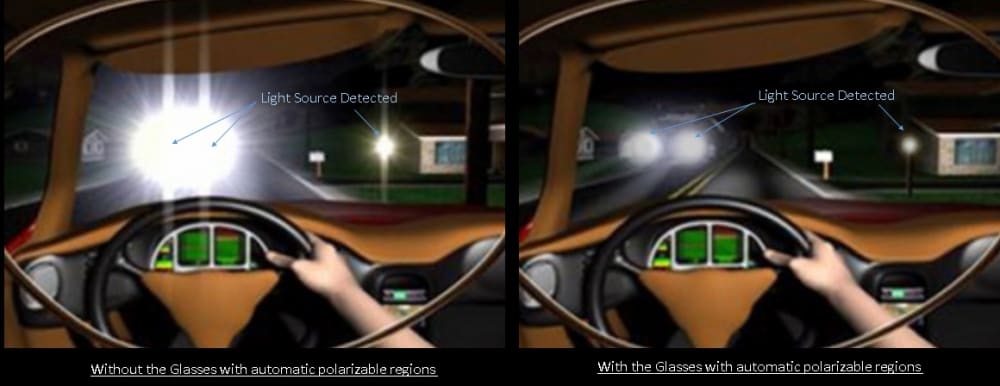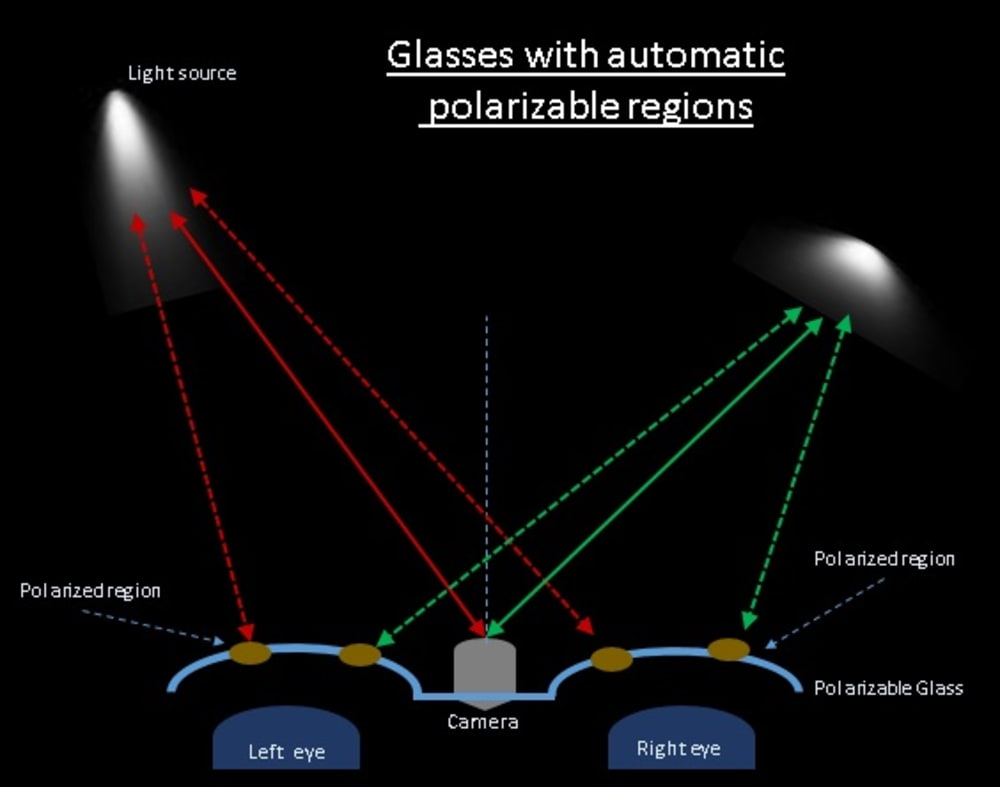Photophobia, light sensitivity or intolerance for light, may turn into a challenge for many people, more so with people who suffer from astigmatism or any problem that affects refraction will have a high sensibility to light; this can affect the capability to view the details of the environment. Research has documented around 150 million people with light refraction problems, only within the United States.
This kind of annoyances can be more evident at night, mainly for people who drive at night will suffer with the lights of from other cars, the excessive brightness of the luminaries as result of the common traffic.
Helping to solve this problem, glasses with automatic polarizable regions can analyze the environment lights and define the areas of the glasses that needs to be polarized to reduce the light in specific directions. Actually, some models of intelligent glasses exists in the market, which contains a micro camera integrated in the frame, with transparent LCD like the lens and contains the capability to develop applications to make a specific task using the included hardware.
It is possible to use them or develop specific glasses to solve that, but the principle of operation will be the same; where the micro camera receives the image in front of the glasses, analyzes the image, evaluates the pixels and compares it to the set point of the brightness defined by the user. Pixels that have a higher level of brightness that the defined set point, represents a light source that needs to be blocked, so the algorithm will define the coordinates X,Y in the LCD of the lens that represents the position of the iris, and will turn this region opaque.
The opaque intensity will depend of the factor defined by the user, and the level of brightness that are over the set point, that can be from a very little gray region to a total black zone. The size of the region will depend on the size and the brightness of the light source, but also, by another factor that the user will define. Therefore, if the opaque region needs to be 5x5 pixels long at 50% of darkness to cover a light source, but if the user feels more comfortable with a region of 10x10pixels with a 30% of darkness it will be possible to configure with a very simple and quick setup.
The position of the opaque regions will depend on the distance and the direction of the light source and the position of the iris; so to get better results it will be necessary to calibrate the glasses. To run a calibration cycle, the user needs to find a fixed light source, and then the glasses will identify it and control the opacity of that region as desired by the user, then the user can move the region in a X,Y axis with the buttons in the side of the frame, in order to find the exact position where the opaque region wants to be placed.
Like this entry?
-
About the Entrant
- Name:Alberto Prud Homme
- Type of entry:individual
- Software used for this entry:Solid Works
- Patent status:none





